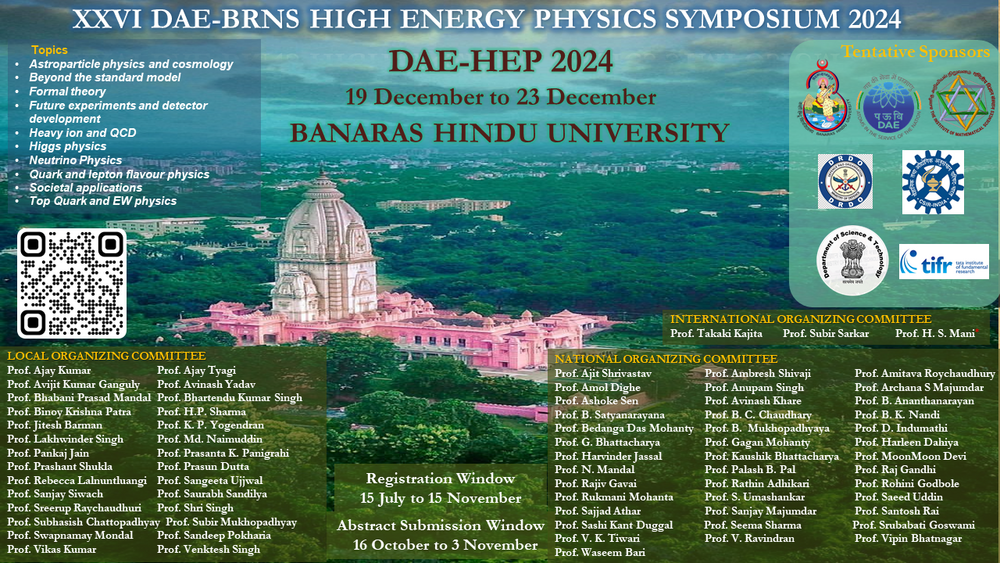Speaker
Description
Despite being stable or long-lived on cosmological scales, dark matter (DM) can decay in the early Universe due to finite-temperature effects. In particular, a first-order phase transition (FOPT) during this period can create a finite window for such decay, ensuring DM stability at lower temperatures, consistent with observations. The FOPT may also produce stochastic gravitational waves (GW) with peak frequencies that correlate with the DM mass. Additionally, early DM decay into neutrinos can lead to a significant neutrino asymmetry, impacting cosmology by increasing the effective relativistic degrees of freedom, $N_{\text{eff}}$, and potentially addressing the recently observed Helium anomaly, among other effects. To prevent excessive baryon asymmetry production, DM decay must occur below the sphaleron decoupling temperature, meaning the FOPT must happen at sub-electroweak scales. This brings the resulting stochastic GW within the detection range of experiments like LISA, μARES, and NANOGrav.
| Field of contribution | Phenomenology |
|---|

